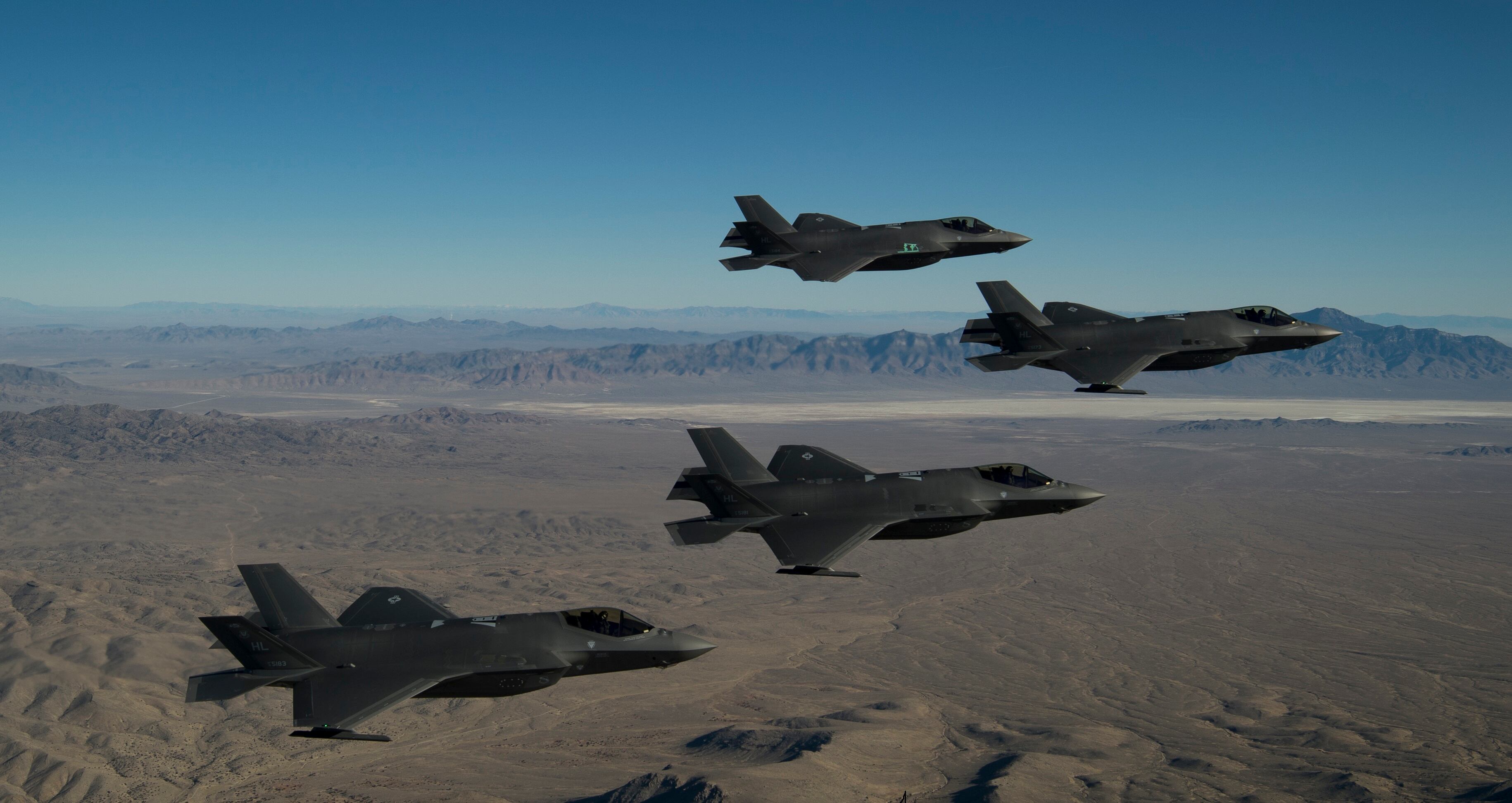The F-35A Joint Strike Fighter is still the way forward in the Air Force’s vision of how it will fight the wars of tomorrow, despite the negative press that has often surrounded the aircraft.
The F-35, a fifth-generation aircraft designed to replace aging F-16 Fighting Falcons and A-10 Thunderbolt IIs, should be thought of as “quarterback of the joint team," and not simply another stealth fighter, said Air Force Chief of Staff Gen. Dave Goldfein at a Brookings Institution event Tuesday.
Goldfein also used the occasion to push back against findings by the Pentagon’s operational and live fire test office, which “currently considers the accuracy of the [internal 25mm] gun, as installed in the F-35A, to be unacceptable." The external guns on the F-35B and F-35C variants are in working order, the report noted.
The F-35A is the conventional takeoff and landing variant designed to operate from conventional runways, and is the only version to carry the internal cannon. F-35As will be the most prevalent version of the aircraft, used by the U.S. Air Force as well as man allied air forces.
Goldfein said he hadn’t seen the report specific to gun accuracy issues, but added that the F-35′s cannon isn’t the driver behind the aircraft, and isn’t what concerns him.
“Given what we built the F-35 to do, I’m not sure the gun is what we should focus on,” Goldfein said. “When we talk about fifth-generation, stealth is actually only a small part of that. … It’s about information fusion."
Goldfein, who flew the F-16 Fighting Falcon and F-117 Nighthawk, compared the aircraft’s future benefit to that of a quarterback — able to call audibles and deciding what to do at the last second after seeing all possible complications.
“When I was a mission commander at Red Flag, my job was to take about a hundred aircraft and choreograph them through different time slices, get them into a battle space and fight against a heavily defended adversary,” he said.
“In my cockpit, what I had displayed for me was what I had on my own radar and what I could hear in my headset, and that was it,” he said. “My job was to figure out mentally, in this 3-D, god’s-eye view, what was going on over hundreds of miles of battlespace.”

An F-35 pilot in combat in 2030 will be getting all that information before the pilot climbs up to altitude, Goldfein said.
“The mission commander now is taxiing out, hasn’t even taken off yet, and is already getting input from what’s happening in space and cyber," he said. "As soon as you pilot that airplane up, it’s already starting to fuse and collect.”
In addition to the information-sharing capabilities, the F-35 has enhanced survivability in the advanced threat environments that peer-level adversaries would be able to field.
The fifth-generation fighter flew in this year’s Red Flag — the Air Force’s premier combat air exercise that includes allied air forces. Although the F-35 was present at Red Flag going back two years, it was still only at its initial operating capability.
Even in 2017, the F-35 reportedly dominated the competition with a 20:1 kill ratio.
A dozen F-35As from the 388th Fighter Wing’s 4th Fighter Squadron, out of Hill Air Force Base, Utah, participated this year, and the aircraft were flush with the latest software updates.
“We have an upgraded software suite that has improved our sensor fusion. We’ve got an expanded flying envelope with more maneuverability," Lt. Col. Yosef Morris, 4th Fighter Squadron commander, said in a news release.
RELATED

During Red Flag, which ended Friday, Goldfein said the aircraft was "exceeding our expectations when it comes to not only being able to survive, but to prosecute targets.”
One pilot who flew in the exercise reported that even novice pilots were quickly “killing” fourth generation aircraft during air-to-air combat.
“My wingman was a brand new F-35A pilot, seven or eight flights out of training,” Col. Joshua Wood, 388th Operations Group commander, said in a news release. "He gets on the radio and tells an experienced, 3,000-hour pilot in a very capable fourth-generation aircraft: ‘Hey bud, you need to turn around. You’re about to die. There’s a threat off your nose.’”
The younger pilot “killed” the simulated enemy aircraft and was able to rack up three more kills over the next hour.
Kyle Rempfer was an editor and reporter who has covered combat operations, criminal cases, foreign military assistance and training accidents. Before entering journalism, Kyle served in U.S. Air Force Special Tactics and deployed in 2014 to Paktika Province, Afghanistan, and Baghdad, Iraq.




